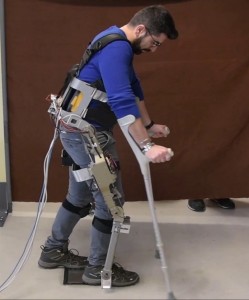
WEARABLE WALKER is an R&D project co-financed under Tuscany POR FESR 2014-2020. Its objective is to build a wearable robotic prototype for lower limbs to be used as an innovative assistive device for supporting walking in people without or with impired legs.
The project partnership is composed by:
- Donati srl (coordinator), important mechanical manufacturer in Valdera, with a strong interest in the development of innovative products in the field of rehabilitation and fitness;
- Wearable Robotics srl, taking the responsibility of the design and integration of the key components of the robotic device;
- Fabrica 136 srl, for processes and product certifications;
- S&T srl, as the responsible for the development of precision mechanical components;
- PERCRO Laboratory of Scuola Superiore Sant’Anna, internationally acknowledged technological competence centre focused on wearable robotics.
The potential market of WEARABLE WALKER is wide: according to the World Health Organization, the 10% of world population relies on other persons due to health disease. As of today, this market is at an early stage because of the recent introduction of similar technologies. Indeed, only three competitors can be identified worldwide. Thus, WEARABLE WALKER will have a relevant impact on the market, since it features several innovative elements compared to its competitors already on the market, gaining corresponding competitive advantages. In particular, WEARABLE WALKER will consist of a central unit (a backpack) and two robotic limbs (the legs) kinematically isomorphic to the human legs which will wear the device.
Based on the proprietary technology owned by Wearable Robotics, the competitive advantages featured by the device built within the project, compared to the devices currently available on the market, are the following:
- Reduced bulkiness and mass of mobile parts,
- Improved dynamic performance,
- Range and accessibility of movements,
- Innovative actuation system making the device intrinsically safe,
- Simpler sensing units for the control system,
- Reduced energy consumption and consequent improvement of power autonomy.

